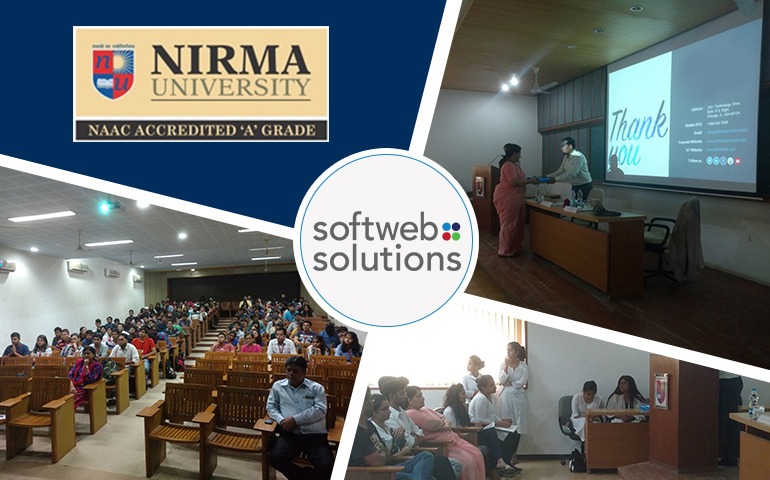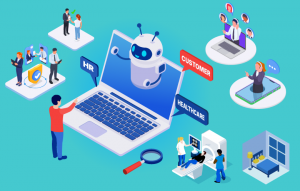Nirma University is one of the premier educational institutions in Ahmedabad, Gujarat. They have a number of degree courses ranging from engineering, management, legal and more. It was an honor to be invited by the engineering and legal departments for a talk on futuristic technologies from an industry standpoint. This was our second visit to their campus, having conducted a talk at the start of the year.
Education is necessary. So is experience. But there is a huge gap between what students learn and what the industrial world needs. While fundamentals are the necessary basics, they are imparted to a multitude of batches year after year. Industries are moving at a much faster pace as compared to educational institutions, especially in India. If we look at the western world, the amount of research and development taking place at such establishments is far higher, driving innovation, creating jobs and contributing to the growth of the economy.
“Fact-check: In the 1980s, Carnegie Mellon successfully deployed the first fully wired university campus which was imperative for the rise of distributed computing. The extent to which distributed computing has contributed to the growth of the tech sector needs no elucidation.”
Of course, companies conduct training, which is essential, but these new, young recruits termed as ‘freshers’ have to be trained for months before they can be assigned to live projects. On top of that, imparting experience is not possible so the only way to accrue it is over time, which comes with a cost to the company.
Reducing the knowledge gap
Colleges need to collaborate with companies beyond the usual engagements of internship and placement. They need to provide the right technologies, platforms and infrastructure and ask the students to create prototypes and demos by provisioning hands-on workshops in the curriculum, conducting seminars and hackathons, as well as participating in relevant events. These activities can greatly reduce the aforementioned knowledge gap.
This is where the faculty comes into the picture. They also need to be educated with the latest developments so that they can successfully teach and guide the students. The faculty needs to have clarity of what the industry needs, which further cements the importance of such initiatives.
Legal concerns of futuristic technologies
Newer technologies have the potential to transform many functions and processes. But there are numerous legal issues that need to be addressed. And the pace at which technology is moving, the legal industry is in a constant state of flux.
Representations, designs and processes created using these new technologies also need protection. Moreover, the legal ramifications of AI systems breaking the law are major debates that should be going on amongst within the legal industry. Again, technologists have to collaborate with other professionals to discuss the issues that can arise and come up with ideal strategies to avoid such instances.
Event highlights
- Our company’s President Mr. Ripal Vyas met with the various departments of engineering where they sought advice of how the curriculum should be updated.
- The presentations were directed towards the engineering and legal colleges in Nirma.
- We also had the students wear Microsoft HoloLens and experience the next level of Augmented Reality.
Conclusion
Having been in the IT development space for over a decade, starting with desktop software to mobile apps and now to the Internet of Things and Artificial Intelligence, we are yet to see a higher demand of talented professionals in the IT sector, and the educational institutes of India have to get onboard the massive disruption caused by technology.









